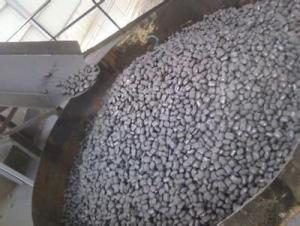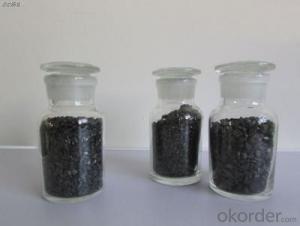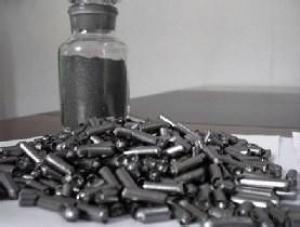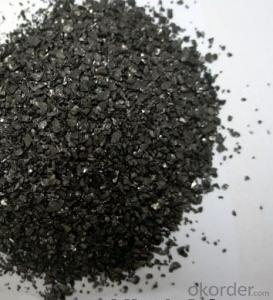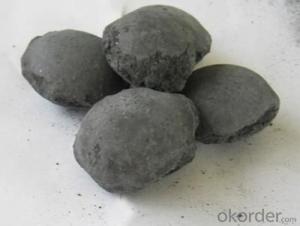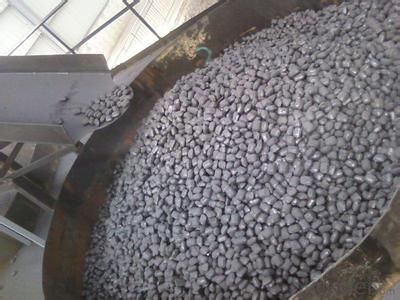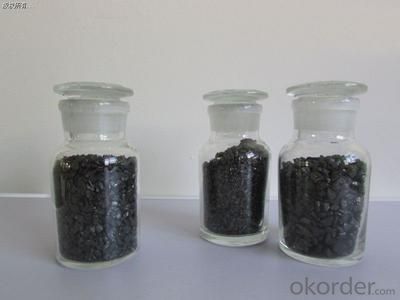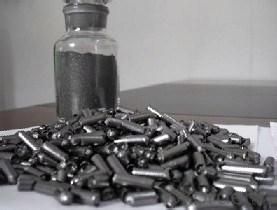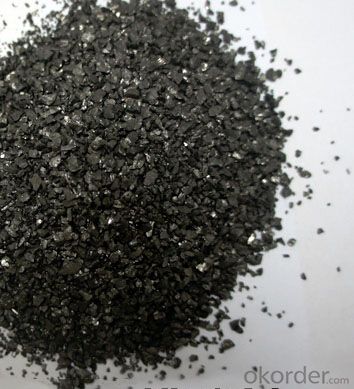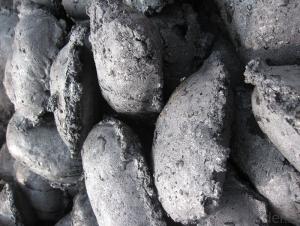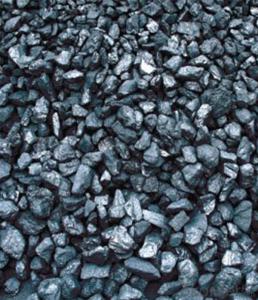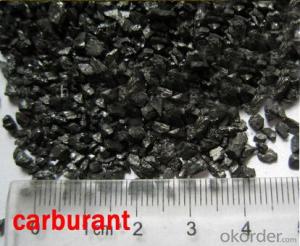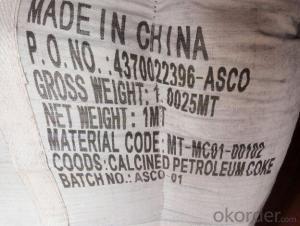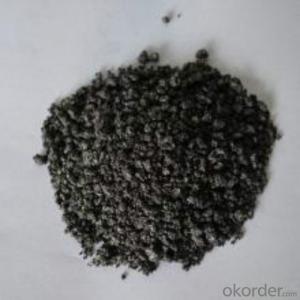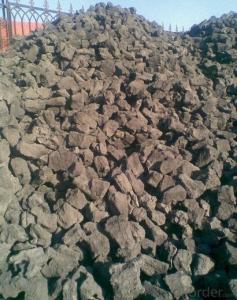Recarburizer FC 95 of Graphitized Petroleum Coke
- Loading Port:
- Qingdao
- Payment Terms:
- TT OR LC
- Min Order Qty:
- 10 m.t
- Supply Capability:
- 300000 m.t/month
OKorder Service Pledge
OKorder Financial Service
You Might Also Like
Recarburizer Application:
- Lower the impurities in the cast iron,
- Choose the right recarburizer can lower the casting cost.
- Recarburizer is essential auxiliary additives for production of high quality steel .
- Also it can can be used as additive for produce other product like brake pad used as friction materials;
- High quality recarburizer is after graphitizing process,under high temperature,the arrangement of carbon atoms in microstructure of graphite.
so call it graphitization ,graphitizing can lower the impurities in recarburizer, increase the carbon content, lower the sulfer content.
Product categories:
At present China have 3 Type Recarburizer:
- Graphite powder ,the dust power of graphite electrode
- Calcined Petroleum Coke part of domestic steel factory use it as recarburizer.
- Graphitized Petroleum Coke ,as recarburizer used for steel casting
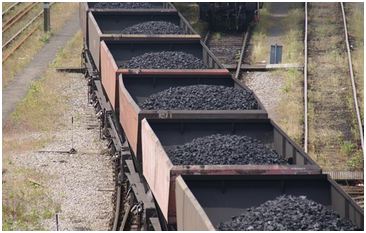
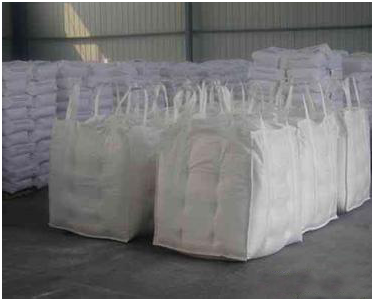
- Q: How many points can Yongan change for 1 carbon coins?
- Every Thursday at 19:00, carbon points change for carbon coins, 19:30 carbon coins exchange gifts
- Q: How does carbon impact the growth and development of plants?
- Plants rely on carbon to grow and develop, making it an indispensable element. The process of photosynthesis is where carbon plays a critical role in converting sunlight into energy. During this process, plants absorb carbon dioxide from the atmosphere, along with water, to create glucose and oxygen. Glucose acts as the main source of energy for plant growth and is used to construct various molecules like cellulose, proteins, and lipids. Aside from its role in sugars, carbon is also crucial for the structure of plant cells. It forms the foundation of complex organic compounds, including carbohydrates, proteins, nucleic acids, and lipids. These compounds are vital for plant growth and development, participating in processes like cell division, elongation, and the formation of new tissues. Moreover, carbon regulates various physiological and metabolic processes in plants. It influences the opening and closing of stomata, the tiny pores on leaves that control the intake of carbon dioxide and the release of oxygen and water vapor. Carbon also impacts the production of plant hormones, which regulate growth, development, and responses to the environment. Nevertheless, excessive carbon dioxide in the atmosphere, caused by human activities like burning fossil fuels, can negatively affect plants. Elevated levels of carbon dioxide can alter plant physiology by increasing photosynthesis rates and decreasing stomatal conductance. These changes can affect the nutritional quality of plants, disrupt their interactions with pests and diseases, and disturb ecosystems. To summarize, carbon is essential for the growth and development of plants. It is a key component of sugars, organic compounds, and structural elements in plant cells. Carbon is involved in crucial processes such as photosynthesis, cell division, and the regulation of physiological and metabolic functions. However, changes in atmospheric carbon dioxide levels can have positive and negative effects on plants, emphasizing the importance of sustainable practices to ensure the future growth and development of plant species.
- Q: What are the impacts of carbon emissions on water scarcity?
- Carbon emissions have significant impacts on water scarcity as they contribute to climate change, which alters precipitation patterns and increases the frequency and intensity of droughts. Additionally, carbon emissions from industrial activities and fossil fuel combustion can lead to water pollution, further exacerbating water scarcity by degrading water quality and reducing available resources for human consumption and agriculture.
- Q: How is carbon stored in the Earth's crust?
- Carbon is stored in the Earth's crust in various forms and geological processes. One primary way carbon is stored is through the formation of sedimentary rocks such as limestone, dolomite, and chalk. These rocks are primarily composed of calcium carbonate, which is derived from the shells and skeletons of marine organisms that lived millions of years ago. Over time, these remains accumulate on the ocean floor and are compacted and cemented to form sedimentary rocks, effectively trapping carbon within them. Another way carbon is stored in the Earth's crust is through the process of carbonation. Carbon dioxide (CO2) from the atmosphere can dissolve in water and react with certain minerals such as basalt, forming carbonate minerals like calcite or magnesite. This process occurs naturally through chemical weathering and volcanic activity, and it helps sequester carbon within the Earth's crust. Additionally, organic carbon is stored in the form of fossil fuels such as coal, oil, and natural gas. These fossil fuels are the remains of ancient plants and microorganisms that lived and died millions of years ago. Over time, the organic matter is buried and subjected to high pressure and temperature, undergoing a process called diagenesis, which eventually converts it into fossil fuels. These deposits act as reservoirs of carbon in the Earth's crust. Overall, the Earth's crust acts as a significant carbon sink, effectively storing carbon through various processes such as the formation of sedimentary rocks, carbonation, and the accumulation of fossil fuels. However, it is important to note that human activities, particularly the burning of fossil fuels, are releasing substantial amounts of stored carbon into the atmosphere, contributing to global climate change.
- Q: DNF new advanced furnace rock carbon reinforcement +10 50 powder weapons, the upper 11 probability of success is how much, how many advanced furnace rock carbon?
- Specifically, for a random item / skill, there is an initial probability, called C. (for each item / skills are different) for example, roaming learned a 10 crit, so he first attack crit rate is C, if not crit, then the next attack, the system will take the chance to crit increased to 2C, if not a crit, then to improve to 3C... Until a crit, and start all over. The next chance of crit returns to the very beginning of C. (obviously, if has not crit, so after a certain number of attacks on X X*C>1, then this will surely be a crit) this is our game in random, many people may have noticed that some of our props inside the game, such as Tara jewelry sets BUFF probability is 1%, but in fact the BUFF probability is much more than 1%. Many props are like this, such as the title of death, robot necklace...... The odds of a low probability are high. The reason is that everything in the game is pseudo random, and our random values are always superimposed, that is to say, definitely. Strengthening equipment is the reverse, for the first time is 100%, and then multiplied by a C, has been multiplied to the probability of infinity approaching 0...... So the cushion works in theory. Believe to see, understand the players have already understood, want to play high carbon to the biggest use, depend on mat. After understanding this point of view we can count the cost of the 20 high carbon equipment 8 yuan then taking yxb:rmb1:20 as an example, if more than 160W will use cost-effective equipment than carbon somehow expensive ~ here is to provide you a way
- Q: How does carbon impact the prevalence of floods?
- Carbon does not directly impact the prevalence of floods, but it does play a significant role in influencing climate change, which in turn can affect the occurrence and severity of floods. Carbon dioxide (CO2) is a greenhouse gas that is primarily responsible for trapping heat in the Earth's atmosphere, leading to a phenomenon known as global warming. This rise in global temperatures has several consequences, one of which is an increase in the frequency and intensity of extreme weather events, including floods. As the planet warms, the atmosphere is able to hold more moisture, resulting in an increased likelihood of heavy precipitation events. This can lead to more intense rainfall, causing rivers and other water bodies to overflow their banks and resulting in flooding. Additionally, warmer temperatures can also cause glaciers and ice caps to melt, contributing to rising sea levels, which can exacerbate the impacts of flood events, particularly in coastal regions. Furthermore, carbon emissions from human activities such as burning fossil fuels and deforestation are the primary drivers of climate change. By reducing our carbon footprint and transitioning to cleaner sources of energy, we can help mitigate the impacts of climate change and potentially reduce the prevalence of floods in the long term. It is important to note that while carbon emissions are a significant factor in climate change, they are not the sole cause of floods. Other natural factors such as rainfall patterns, topography, and land use also play important roles in determining flood risks.
- Q: What is carbon nanomembrane?
- A carbon nanomembrane (CNM) is a thin layer of carbon atoms arranged in a lattice structure, with a thickness of just one atom, making it one of the thinnest materials known. To create CNMs, a precursor material is deposited onto a substrate and then transformed into a pure carbon layer through heat or chemical processes. The unique properties of carbon nanomembranes have generated significant interest in science and technology fields. CNMs are highly impermeable to gases and liquids, making them ideal for applications like gas separation and filtration. They also possess excellent electrical conductivity, making them suitable for electronic devices and sensors. Moreover, carbon nanomembranes can be tailored with specific pore sizes and chemical functionalities, enabling their use in molecular sieving and biological applications. They have shown potential in drug delivery, water purification, and tissue engineering. Additionally, CNMs exhibit impressive mechanical strength and flexibility, providing opportunities for use in lightweight and flexible electronics. In conclusion, carbon nanomembranes offer a versatile and exciting platform for various applications. Ongoing research and development in this field aim to further explore and utilize the unique properties of CNMs to advance different industries.
- Q: How do humans contribute to carbon emissions?
- Humans contribute to carbon emissions through various activities, such as burning fossil fuels for electricity, transportation, and heating; deforestation and land-use changes; industrial processes; and the production and disposal of waste. These actions release significant amounts of carbon dioxide and other greenhouse gases into the atmosphere, exacerbating the greenhouse effect and contributing to climate change.
- Q: How does carbon affect the formation of hurricanes?
- Hurricane formation is not directly affected by carbon. It is primarily driven by warm ocean temperatures, high humidity, and the Coriolis effect. However, carbon emissions and the resulting increase in greenhouse gases have been linked to climate change, which indirectly affects the formation and intensity of hurricanes. The accumulation of carbon dioxide and other greenhouse gases in the atmosphere is causing climate change, which is leading to higher global temperatures. These warmer ocean temperatures provide more energy to hurricanes, potentially increasing their intensity and destructiveness. Furthermore, climate change can alter wind patterns and atmospheric circulation, influencing the development and movement of hurricanes. Moreover, when carbon dioxide dissolves into seawater, it can cause ocean acidification. This can harm marine life and disrupt the delicate balance of ecosystems. Such disruption can indirectly impact hurricane formation, as healthy ecosystems play a crucial role in regulating the climate and maintaining a stable environment. While the formation of hurricanes is not directly impacted by carbon emissions, their contribution to climate change and subsequent effects on Earth's systems can have significant consequences for the frequency, intensity, and behavior of hurricanes. To lessen the future impacts of hurricanes and protect vulnerable coastal regions, it is important to reduce carbon emissions and mitigate climate change.
- Q: How is carbon used in the production of carbon fiber?
- Carbon is used in the production of carbon fiber by being subjected to high temperatures and combined with other elements to create a material that is strong, lightweight, and resistant to heat and chemicals.
Send your message to us
Recarburizer FC 95 of Graphitized Petroleum Coke
- Loading Port:
- Qingdao
- Payment Terms:
- TT OR LC
- Min Order Qty:
- 10 m.t
- Supply Capability:
- 300000 m.t/month
OKorder Service Pledge
OKorder Financial Service
Similar products
Hot products
Hot Searches
Related keywords
